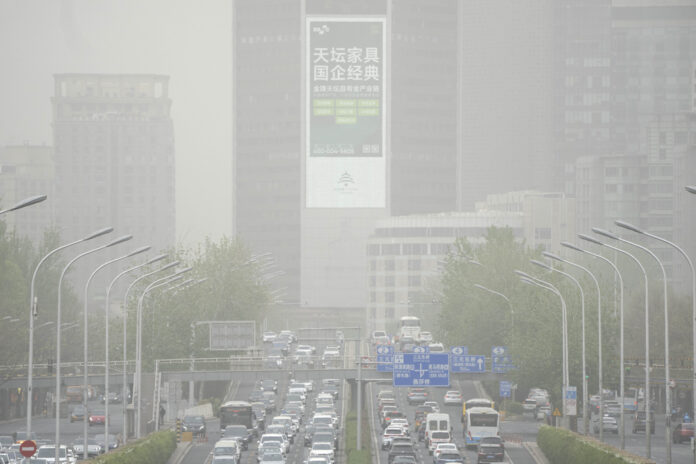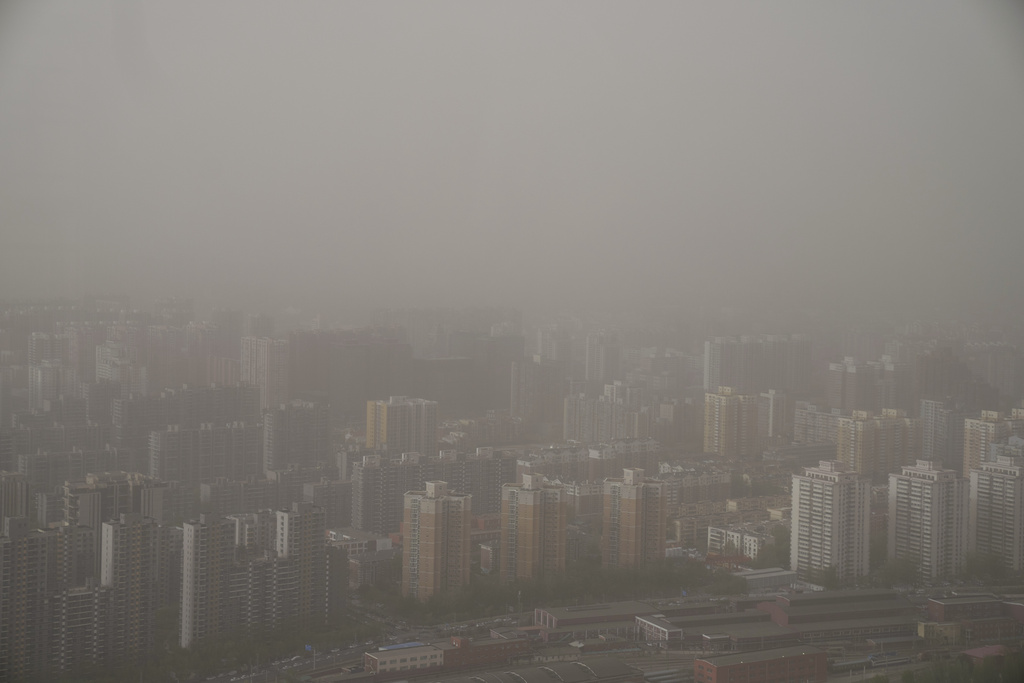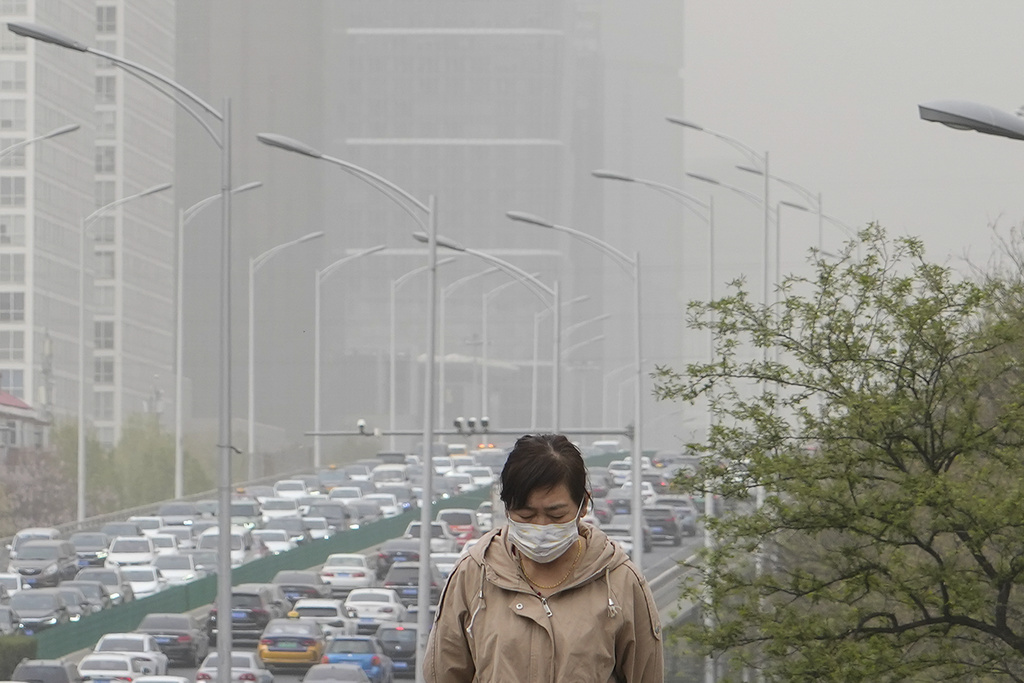
BEIJING (AP) — Many areas in northern China were blanketed with floating sand and dust on Thursday, and a sandstorm was expected to sweep through parts of Inner Mongolia.
The sandy, dusty weather and strong winds will last until Sunday, the National Meteorological Center said in a statement, adding the public should take precautionary measures to guard against poor air quality.

It renewed a blue alert for sandstorms — the least severe warning in the country’s four-tier weather warning system — and forecast that more than a dozen regions, including major cities like Beijing and Shanghai, would see some areas affected by floating sand and dust on Thursday.
The center’s chief forecaster, Gui Hailin, earlier said the sandy and dusty weather began Sunday in southern Mongolia. As cold air moved southward, the weather spread to various regions including northern and northeast China, he said.
In Beijing, buildings and traffic were shrouded by low visibility. The IQAir website showed an air quality index of 540 for the capital and labeled its air pollution level as “hazardous.” The Beijing Municipal Ecological and Environmental Monitoring Center issued the highest air pollution warning.

Running enthusiast Tu Jiaxian said the sandstorm had a “huge impact” on her life because it interrupted her marathon training plans.
“I want to run but I dare not run because of the weather. That is very painful,” Tu said, adding she had quit her daily 10-kilometer (6.2-mile) jogs for three days this week due to the weather.
Cao Yuanyuan, a newcomer to Beijing, was surprised at first to see the hazy scenes and took photos of them. But the bad weather forced her to wear glasses as a protective measure and keep the windows in her room shut.
“But there is still sand coming in, and I can smell the earth,” Cao said.
At the same time, Kyodo News reported that the dust from sandstorms traveling from China darkens the sky over the southwestern Japan city of Fukuoka since April 12.
According to South China Morning Post, sandstorms plaguing northern China have spread across the sea, shrouding skies from South Korea to Japan and bringing the first yellow dust to Tokyo since 2021.
Sandstorm particles have been detected in the northern and western parts of Japan and are expected to be found throughout Thursday, according to a Wednesday statement from the Japan Meteorological Agency.
Visibility could be less than 5km in some places, it said. Particles were detected in Tokyo for the first time in two years, according to local broadcaster TBS, citing the JMA.
In South Korea, commuters complained of sore throats as AirKorea warned that all regions of the country would have “very unhealthy” air today because of the sandstorms. The fine dust level soared to 10 times higher than average on Wednesday.


















































